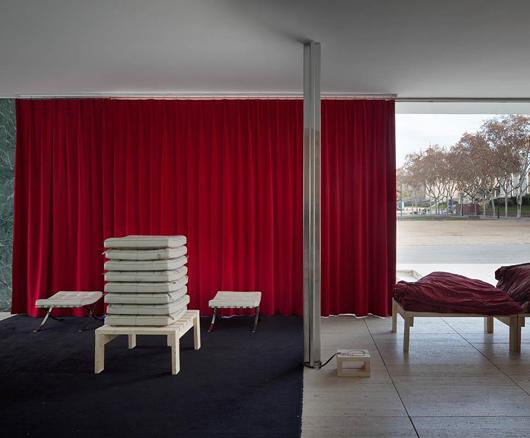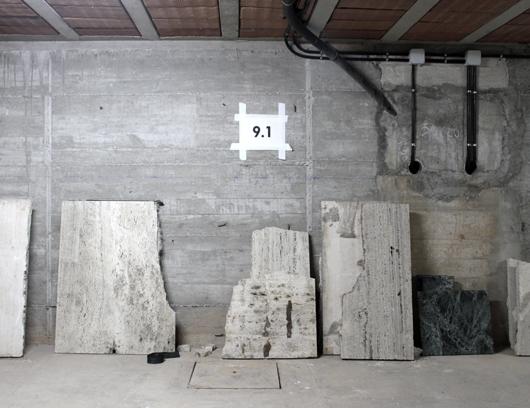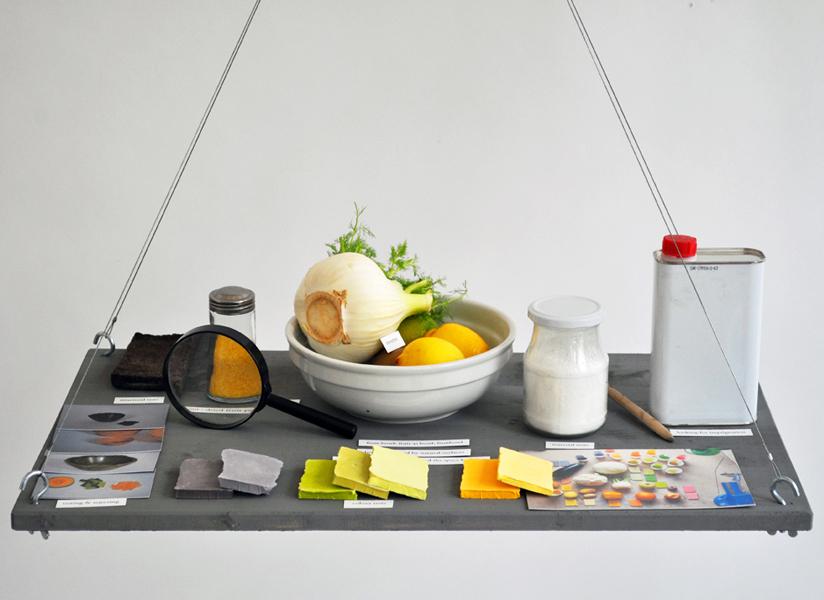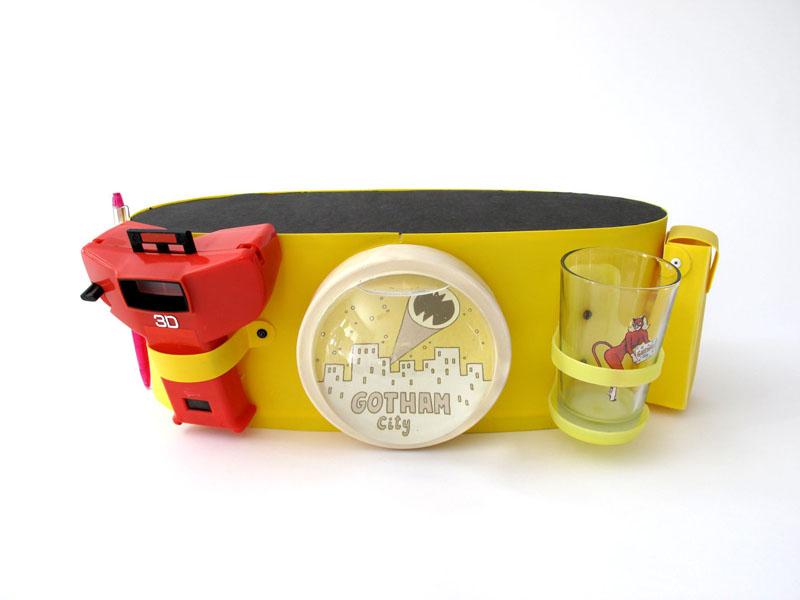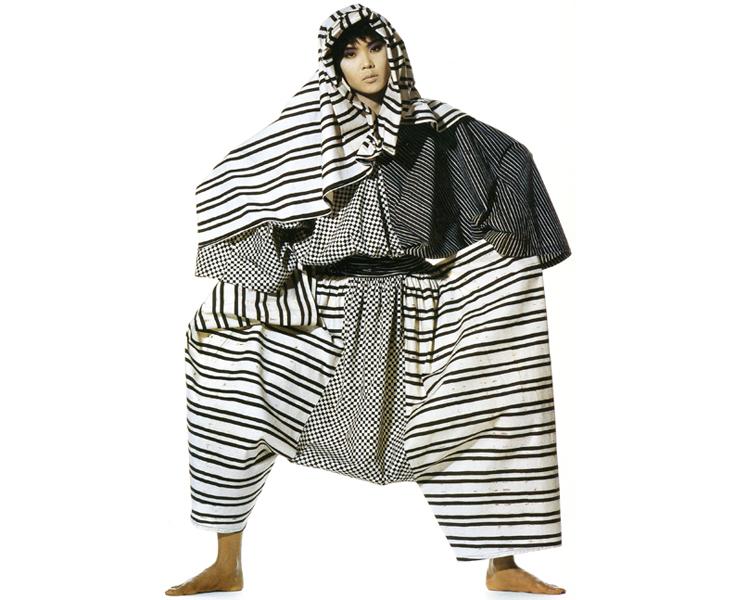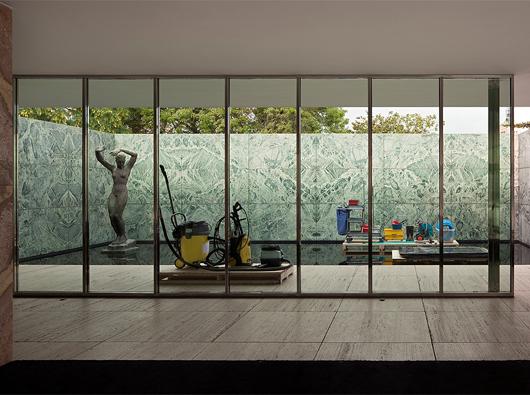
01.07.13
Excerpt: Exhibition
Phantom: Mies as Rendered Society by Andrés Jaque
PHOTOS BY MIGUEL DE GUZMAN
Considering Mies van der Rohe designed the 1929 Barcelona Pavilion to emphasize transparency and freedom of movement, you’ve got to hand it to the Spanish architect Andrés Jaque for his genius new exhibition “Phantom: Mies as Rendered Society,” which plumbs the one part of the building that’s always been both hidden and completely off limits to the public: its basement. When we spotted these images of the show on Dezeen last week, complete with broken window panes in the reflecting pool and an industrial vacuum on the patio, we kind of lost it — talk about sights unseen! Jaque’s installation, the latest in a series of Barcelona Pavilion interventions by designers like SANAA and Ai Weiwei, takes what’s basically an overlooked yet significant refuse pile and transforms it into something unmistakably gorgeous. 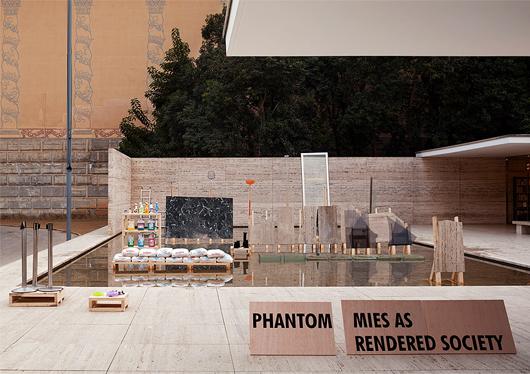
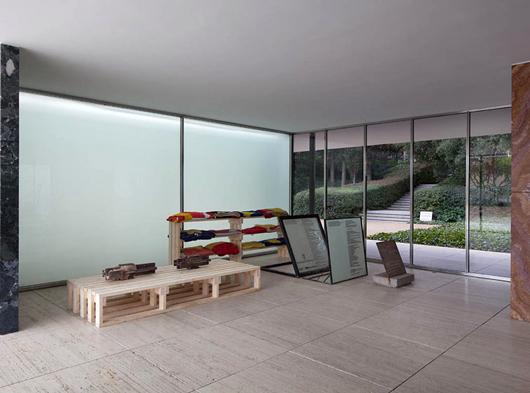 Though the temporary Pavilion itself was torn down in 1930 and meticulously reconstructed as a permanent structure in the ’80s, the existing basement is actually original, dug out with the building in 1929 as a maintenance space for the installations. According to Jaque — who spent two years researching his project before it debuted on December 13 — Van der Rohe deliberately made the basement entrance hard to access in order to ensure that it would never be used as additional exhibition space, but remain as the Pavilion’s unseen “ghost,” as Jaque puts it in the exhibition title. Mies, though, never said anything about the basement’s contents. Carefully arranged in artful tableaus, the treasures now on view include not only quotidian objects like rakes, bags of salt for the pool, and cleaning supplies, but relics like slabs of cracked travertine from the original Pavilion’s floor and stacks of worn-out Barcelona Chair cushions that are a testament to how many people have come through the space in the past 30 years. There’s also a display of all the different flags that have flown on the Pavilion’s flagpole throughout history, notes Dezeen.
Though the temporary Pavilion itself was torn down in 1930 and meticulously reconstructed as a permanent structure in the ’80s, the existing basement is actually original, dug out with the building in 1929 as a maintenance space for the installations. According to Jaque — who spent two years researching his project before it debuted on December 13 — Van der Rohe deliberately made the basement entrance hard to access in order to ensure that it would never be used as additional exhibition space, but remain as the Pavilion’s unseen “ghost,” as Jaque puts it in the exhibition title. Mies, though, never said anything about the basement’s contents. Carefully arranged in artful tableaus, the treasures now on view include not only quotidian objects like rakes, bags of salt for the pool, and cleaning supplies, but relics like slabs of cracked travertine from the original Pavilion’s floor and stacks of worn-out Barcelona Chair cushions that are a testament to how many people have come through the space in the past 30 years. There’s also a display of all the different flags that have flown on the Pavilion’s flagpole throughout history, notes Dezeen.
 While some of the basement’s contents had built up over the years, like the chair cushions, Jaque particularly reveled in the items that had been there since day one — and that now serve as a snapshot for a moment in time. As he notes in his curator’s statement: “In the end, the basement has been used to store all of the material witnesses which provide an account of the social fabric involved in a shared project: every day reinterpreting the May morning on which the Pavilion of ’29 was first opened.”
While some of the basement’s contents had built up over the years, like the chair cushions, Jaque particularly reveled in the items that had been there since day one — and that now serve as a snapshot for a moment in time. As he notes in his curator’s statement: “In the end, the basement has been used to store all of the material witnesses which provide an account of the social fabric involved in a shared project: every day reinterpreting the May morning on which the Pavilion of ’29 was first opened.”
